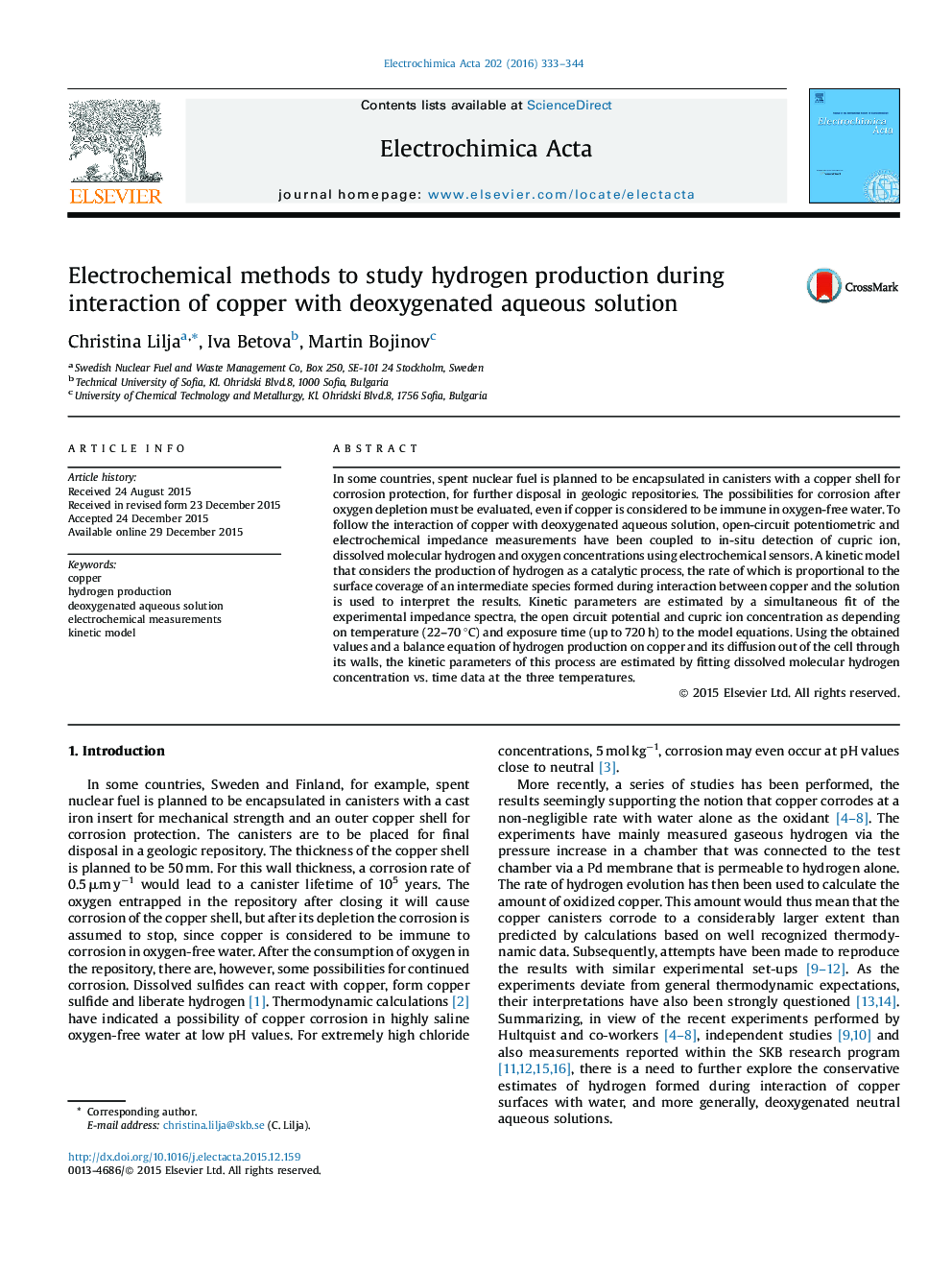| Article ID | Journal | Published Year | Pages | File Type |
|---|---|---|---|---|
| 183086 | Electrochimica Acta | 2016 | 12 Pages |
In some countries, spent nuclear fuel is planned to be encapsulated in canisters with a copper shell for corrosion protection, for further disposal in geologic repositories. The possibilities for corrosion after oxygen depletion must be evaluated, even if copper is considered to be immune in oxygen-free water. To follow the interaction of copper with deoxygenated aqueous solution, open-circuit potentiometric and electrochemical impedance measurements have been coupled to in-situ detection of cupric ion, dissolved molecular hydrogen and oxygen concentrations using electrochemical sensors. A kinetic model that considers the production of hydrogen as a catalytic process, the rate of which is proportional to the surface coverage of an intermediate species formed during interaction between copper and the solution is used to interpret the results. Kinetic parameters are estimated by a simultaneous fit of the experimental impedance spectra, the open circuit potential and cupric ion concentration as depending on temperature (22–70 °C) and exposure time (up to 720 h) to the model equations. Using the obtained values and a balance equation of hydrogen production on copper and its diffusion out of the cell through its walls, the kinetic parameters of this process are estimated by fitting dissolved molecular hydrogen concentration vs. time data at the three temperatures.
